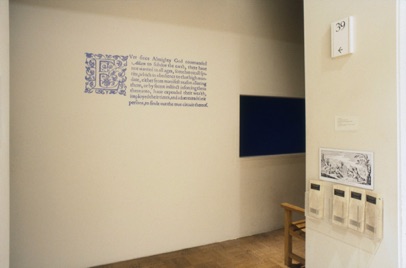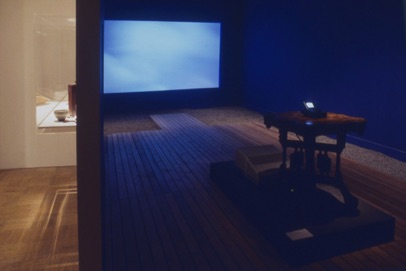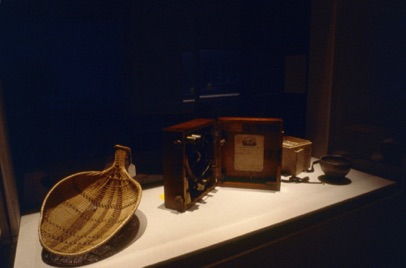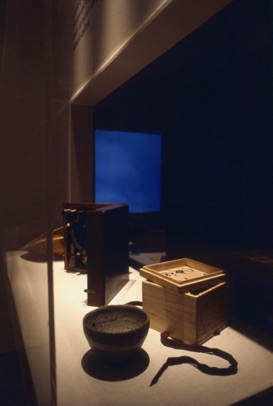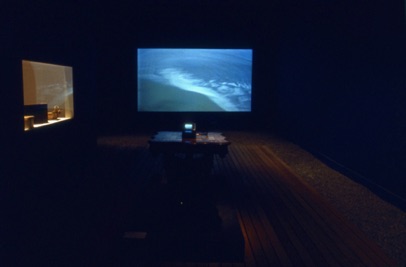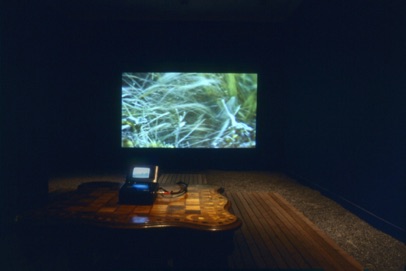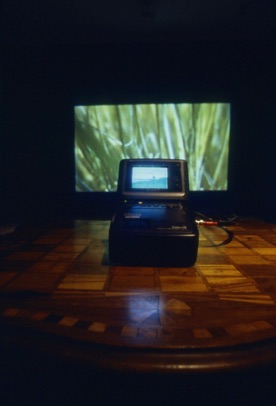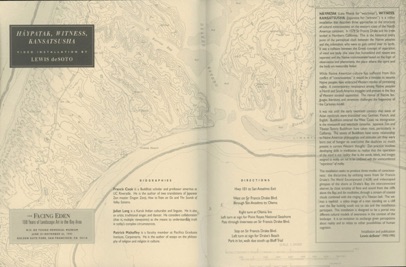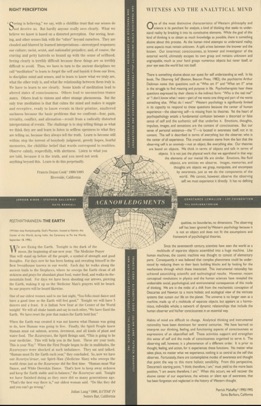VIDEO INSTALLATION
DeYoung Museum, San Francisco, 1995
San Francisco Arts Commission Gallery, 1990
“HÁYPATAK, (Lake Miwok for “watchman”), WITNESS, KANSATSUSHA (Japanese for “witness”) is a video installation that describes three approaches to the structure of cultural consciousness on the western coast of the North American continent. In 1579 Sir Francis Drake and his crew landed in Northern California. This is the historical entry point of the perceptual clash between the Native peoples and the colo- nialists who were to gain control over these lands. It was a collision between the Greek concept of separation of mind and body (the view that humankind and nature are separate) and the Native consciousness based on the logic of observation and phenomena, the place where the spirit and the body are inexorably linked.
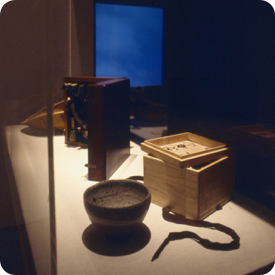
While Native American culture has suffered from this conflict of “consciousness”, it would be a mistake to assume Native peoples have embraced Western modes of perceiving reality. A contemporary renaissance among Native peoples in North and South America presses in the face of Western societal opposition. The revival of Native languages, literature and ceremony challenges the hegemony of the Cartesian model.
It was not until the early twentieth century that texts of Asian mysticism were translated into German, French and English. Buddhism entered the West Coast via immigration in the nineteenth and twentieth centuries. Japanese Zen and Tibetan Tantric Buddhism have taken root, particularly in California. The tenets of Buddhism have some relationship to Native American philosophies and attitudes yet they were born out of hunger to overcome the dualities so much present in current Western thought. Zen practice involves developing skills in meditation to real- ize that the operation of the mind is not reality; that is the words, labels and images assigned to reality are not to be confused with the unencumbered experience of reality.
This installation seeks to produce three modes of consciousness: the discursive by utilizing texts from Sir Francis Drake’s The World Encompassed (1628) and videotaped glimpses of the shore at Drake’s Bay. Secondly, the interconnected observer, by close scrutiny of flora and sound from the cliffs above the Bay and finally the meditative, through a stream of coastal clouds combined with the ringing of a Tibetan bell. The witness is twofold: a video image of a man standing on a cliff over the Bay looking south out to sea and the installation participant. This installation is designed to be a portal into different cultural models of awareness in the context of the landscape. It is an invitation to exchange given perceptions about reality and to relate to other possibilities of human cognition.” ©1990/1995 Lewis deSoto from the Brochure printed by the DeYoung Museum, San Francisco.
